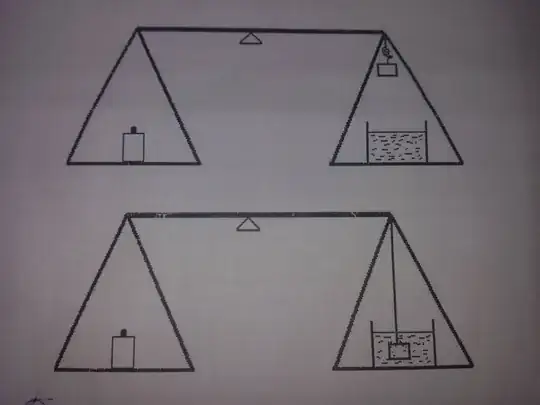EDIT:
Since this answer is not being very well received I will just say that if we neglect gravitational forces due to the height difference between the mass in the upper and lower pictures; then yes, the scales will be balanced as there is simply no net torque.
However, since the question did not stipulate these assumptions then the answer below is the correct one:
Look at the RHS of the scale and consider Newton's Law of Gravitation $$F=-\frac{G \cdot m\cdot m_E}{d^2}$$ On the RHS consider $m$ to be the mass of block suspended by the string and $m_E$ is the mass of the Earth $\approx 6\times 10^{24}$kg. $G$ is the gravitational constant and $d$ is the distance of the string between the block in the top picture and the one in the bottom plus the distance to the centre of the earth.
Now let $m_{s}$ be the mass of the submerged block in the container of the lower RHS and $d_E$ is the distance to the centre of the earth.
$$F=-\frac{G \cdot m_{s}\cdot m_E}{d_E^2}$$
The gravitational force acting on the RHS of lower system is therefore greater by Newton's inverse square law.
Can you now understand why once the block is dropped into the fluid the RHS of the lower image will weigh more and hence tilt clockwise?
